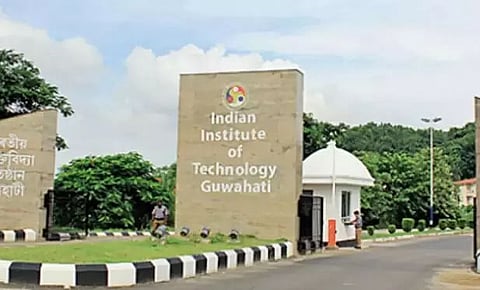
- Home
- Live Blog
- Breaking News
- Top Headlines
- Cities
- NE News
- Sentinel Media
- Sports
- Education
- Jobs

GUWAHATI: A research team from the Indian Institute of Technology Guwahati (IIT-G) led by Dr Tushar Debnath, Ramanujan faculty, Centre for Nanotechnology, IIT-G, is exploring novel methods to fine-tune perovskite nanocrystals for optoelectronics applications. A recent review and outlook paper on the topic has been published in the Chemistry -A European Journal, co-authored by Dr Debnath and his research scholar Avik Das.
There is extensive research all over the world in developing materials for use in solar cells and light-emitting devices. Of the many materials being developed, perovskites are the most common ones. Perovskites are a family of crystals that have optoelectronic properties that are suitable for light-emitting and light-absorbing applications. Perovskite nanocrystals (PNCs) – crystals that are a hundred thousand times smaller than the width of a human hair – are in particular being extensively explored because of their specific optoelectronic properties such as tunable bandgaps, narrow emission, and strong light-absorption coefficients.
Despite promise, the use of perovskite nanocrystals in solar cells and light-emitting applications has been hindered by their poor stability in air and moisture. While many research groups have been working towards overcoming the water sensitivity of perovskite nanocrystals, the IIT-G team studied ways in which water sensitivity can be used constructively.
The team capitalized on the highly ionic nature of the perovskite crystal structure to engineer water-triggered chemical transformation to produce stable and bright PNCs. They have reviewed earlier research on interfacial chemistry between aqueous and non-aqueous phases and the effects of doping on the interaction between water and the perovskite nanocrystals.
Speaking about his research, Dr Tushar Debnath, lead researcher said, "Our review shows that water can be 'good' for perovskites if we can utilize it properly and may lead to the development of several engineered structures."
In the recently published review paper, the authors have discussed various methods by which water can be used to bring about structural and morphological changes to perovskite, thereby enhancing its stability and optoelectronic properties.
The researchers have proposed various water-trigger approaches can be easily extended to tailor many perovskites with different compositions and to make several perovskite heterostructures.
Also Watch: